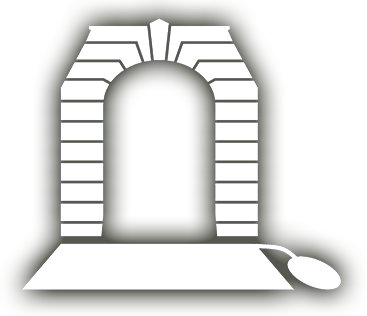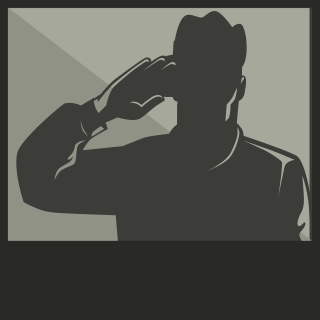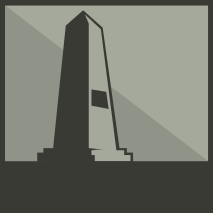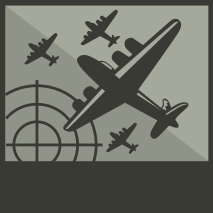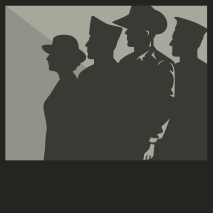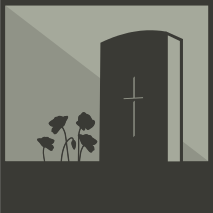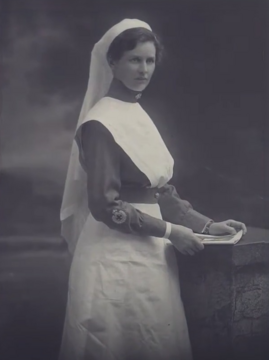
PORTER, Katherine Agnes Lawrence
| Service Numbers: | Sister, Nurse |
|---|---|
| Enlisted: | 20 March 1915, Sydney, New South Wales |
| Last Rank: | Sister |
| Last Unit: | Australian Army Nursing Service (WW1) |
| Born: | Milton, New South Wales, Australia, 17 December 1882 |
| Home Town: | Milton, Shoalhaven Shire, New South Wales |
| Schooling: | Milton Public School |
| Occupation: | Nurse |
| Died: | Influenza, Randwick, New South Wales, Australia , 16 July 1919, aged 36 years |
| Cemetery: |
Waverley Cemetery, Bronte, New South Wales Grave Reference: R.C. Vault. 16. 649A. (GRM/2*). |
| Memorials: | Australian Military Nurses Memorial, Australian War Memorial Roll of Honour, Kapunda Dutton Park Memorial Bullwinkel Memorial, Maryborough Nurses Honour Board, Melbourne St. Paul's Cathedral Australian Army Nursing Service Great War Roll of Honour |
World War 1 Service
| 20 Mar 1915: | Enlisted Australian Army Nursing Service (WW1), Staff Nurse, Sister, Australian Army Nursing Service (WW1), Sydney, New South Wales | |
|---|---|---|
| 13 Apr 1915: |
Involvement
Australian Army Nursing Service (WW1), Nursing Sister, Nurse, 1st Australian General Hospital, Enlistment/Embarkation WW1, --- :embarkation_roll: roll_number: '23' embarkation_place: Sydney embarkation_ship: HMAT Kyarra embarkation_ship_number: A55 public_note: '' |
|
| 13 Apr 1915: | Embarked Australian Army Nursing Service (WW1), Nursing Sister, Nurse, 1st Australian General Hospital, HMAT Kyarra, Sydney | |
| 16 Jul 1919: | Involvement Australian Army Nursing Service (WW1), Sister, Australian Army Nursing Service (WW1) |
Help us honour Katherine Agnes Lawrence Porter's service by contributing information, stories, and images so that they can be preserved for future generations.
Add my storyBiography contributed by Faithe Jones
FAMILY BACKGROUND
Katherine Agnes Porter (later Katherine Agnes Lawrence Porter) was born on 17 December 1882 in East Milton, in the Municipality of Ulladulla on the south coast of New South Wales. She was the daughter of Mary Guthrie (c. 1852–1936) and John Porter (c. 1838–1930).
Mary Guthrie was born in Kilshanny in County Clare, Ireland. Her parents migrated to Australia on the Sapphire in May 1859 and arrived in Milton, Ulladulla when Mary was six years old.
John Porter was born in Liverpool and migrated to Melbourne in late 1860 or early 1861. He was a builder and carpenter who specialised in staircases and came out to help his cousin John Morgan Jnr. to build the lighthouse at Geelong (possibly meaning the twin lighthouses at nearby Queenscliff, which were built in 1861–62 to replace earlier structures). Upon arriving in Melbourne (having worked on the the lighthouses or not), John learned that gold had been found at Lambing Flat, in southwestern New South Wales (renamed Young in 1861), and joined the rush.
Not finding success at Lambing Flat, and with his money running low, John bought a horse, saddle and bridle and set out for Sydney, 380 kilometres to the east. After finding no work to his satisfaction, he travelled 280 kilometres south along the coast to Milton. He settled there, resuming his career as a builder and eventually buying a small farm in East Milton.
In due course John met Mary Guthrie. They were married on 28 September 1870 and lived on John’s farm in East Milton. Their first child, John Arthur, was born in November 1870. A month later John was awarded the tender to build the Milton School of Arts. It opened in August 1872.
By then the Porters’ second child, Alice (1872–1901), had been born. She was followed by Thomas (1874–1946); William, who was born and died in 1876; Mary Therese (1877–1962); Elizabeth May (Lizzie) (1880–1937); Katherine in 1882; Charles (1885–1974); William Edward (1887–1937); Ann (Annie) (1889–1977); Edna Jean (Tot) (1891–1967); Henry (Harry) (1893–1969); and finally Stephen (1895–1943).
John had lost a lot of money on the construction of the Milton School of Arts and sometime later gave up the building trade to take up dairy farming. He had acquired a 210-acre selection around six kilometres northwest of Milton at a locality known as Little Forest. This property became known as the ‘Duck Hole’ due to the presence of a large waterhole. He appears to have kept dairy cows both here and at the farm in East Milton.
NURSING
Katherine, known familiarly as Kitty, grew up in Milton. She and her siblings attended Milton Public School, sometimes intermittently; on at least two occasions John Porter was fined for not sending his children to school for the requisite number of days.
As an adult Kitty decided to go into nursing and in February 1908 secured a position as a probationer at Sydney Hospital, possibly through a family connection with Matron Rose Creal. Later in 1908 she was granted a six-month leave of absence due to the illness of her maternal grandfather, Thomas Guthrie, and resumed her probationary period in April 1909. According to the matrons’ register, Kitty and the other probationers completed their trial period “fairly satisfactorily and [were] anxious to remain.” Kitty graduated in June 1912 and in December 1913 passed her Australasian Trained Nurses’ Association entrance examination in general nursing.
Early on in her training Kitty had added ‘Lawrence’ (her paternal grandmother’s maiden name) to her name to help to distinguish her from another trainee at Sydney Hospital, Minnie Katherine Porter.
There is some indication that following her training Kitty became a theatre nurse at the Royal Hospital for Women in Paddington. She then transferred to the South Sydney Women’s Hospital in Newtown (or possibly the South Sydney Hospital in Zetland; sources differ).
On 25 April 1914 Kitty was involved in a drowning tragedy. She and three friends – Annie and Susan Millar, known to Kitty from Milton, and Nurse Kelly, a colleague from South Sydney Women’s Hospital – had ventured down to Maroubra Bay for the afternoon. They did not know the beach but had been told that the safest bathing was from the flat rocks at the northern end of it. Kitty, Annie and Susan entered the water while Miss Kelly stayed on the rocks.
Almost immediately Annie, who was a little further out than the other two, got into difficulties. Kitty and Susan either started to help her or were caught by the same undertow and were quickly in difficulties also. Seeing this, Miss Kelly shouted for help, and two fishermen, Messrs. Packer and Mulhall, arrived. Kitty, exhausted, managed to get herself out of the water, while Mr. Packer helped Susan out. Mr. Mulhall ran off to fetch a lifesaving reel, but nobody could be found who knew how to use it. Eventually a man named George Smith took the reel and swam out to poor Annie, who was now 200 metres out and apparently unconscious. After a mighty struggle George Smith brought her back to shore. However, despite valiant efforts to resuscitate her, Annie was pronounced dead by a doctor who had been summoned.
ENLISTMENT AND EMBARKATION
Not many months after this tragic incident, the Great War broke out in Europe. Before long, thousands of men had enlisted in the Australian Imperial Force (AIF), and hundreds of women had joined the Australian Army Nursing Service (AANS), hoping to serve abroad with the AIF. Kitty was one of them. She joined on 20 March 1915 while on the staff of the Royal Prince Alfred Hospital in Camperdown and had her medical two days later. Curiously, her stated age, 29, does not tally with what we understand to be her birthdate.
Kitty was attached to the 1st Australian General Hospital (AGH) as a reinforcement staff nurse and informed that she would soon be leaving for abroad. She paid a visit to Milton to bid her family and friends goodbye before her departure.
On 13 April Kitty and 38 other 1st AGH reinforcement staff nurses under the charge of Matron Edith Cornwell travelled to Sydney Harbour and made their way to Farm Cove, which lay between Woolloomooloo Bay and Sydney Cove. There, lying at anchor, was HMAT Kyarra, which was set to carry them to Egypt. The 40 nurses embarked alongside around 30 medical officers and other male staff of the unit and at 12 noon the ship departed. It called into Brisbane, where more male staff of the 1st AGH boarded, then sailed via Townsville, Thursday Island, Colombo and Aden before arriving at Suez at 7.15 pm on 27 May.
The following day Kitty and her colleagues disembarked and entrained for Cairo. Upon arrival some 10 hours later, they were taken to Heliopolis, a new garden suburb lying 10 kilometres northeast of central Cairo, where the 1st AGH was based.
1st AUSTRALIAN GENERAL HOSPITAL, HELIOPOLIS
The 1st AGH, together with its sister hospital, the 2nd AGH, had arrived in Egypt in January 1915 on HMAT Kyarra to support the 20,000-strong Australian expeditionary force that had arrived the previous month. While the 2nd AGH took over Mena House, a luxurious hotel situated close to the Pyramids of Giza on the southwestern fringes of Cairo, the 1st AGH established its hospital in the far grander Heliopolis Palace Hotel, completed only five years prior.
Almost immediately the 1st AGH came under bed pressure. In response, the spaces within the Heliopolis Palace Hotel were better utilised, and then the hospital began to expand beyond the hotel. Separate tented wards for venereal patients and for infectious patients, mainly measles sufferers, were erected at the Heliopolis Aerodrome, located a kilometre from the hotel. However, it proved difficult to treat the serious measles cases at the Aerodrome, and a tented camp was established in the grounds of the hotel, to which were transferred all serious infectious cases and all cases with complications.
In March, with hot winds beginning to blow, the serious infectious patients were moved from the grounds of the hotel into one of its wings, and the camp abolished. This arrangement proved unsatisfactory, and in early April the patients were moved from the hotel to a nearby skating-rink, the lower section of a pleasure resort known as Luna Park, which had recently been acquired by the 1st AGH. The remaining infectious patients from the Aerodrome were moved there as well.
It became obvious, however, that in the event of an emergency the skating-rink might better serve as an overflow ward of the Heliopolis Palace Hotel, and on 26 April a nearby building known as the Casino was taken over and the infectious cases transferred there. The skating-rink was now empty and ready to receive overflow cases from the hotel.
Meanwhile, in mid-April a section of the Abbassia Military Barracks, situated four kilometres closer to central Cairo, had been obtained and converted into an excellent venereal diseases hospital to which the venereal cases from the Aerodrome and those from the skating-rink were transferred.
THE GALLIPOLI CAMPAIGN
On 25 April, the opening day of the Gallipoli Campaign, only 495 patients occupied the 1st AGH’s many beds. The number shifted little over the next three, then on 29 April, without warning, wounded AIF men began to arrive at the Heliopolis Palace Hotel in appalling numbers, brought in by train from Alexandria via Cairo to the newly completed railway siding adjacent to the hotel. In a letter home dated 7 May, Kitty’s soon-to-be colleague Sister Constance Keys described their arrival.
“There have been sad happenings since I last wrote. I don’t know if the news is known in Queensland yet but the greater part of the men we came over with are either wounded or killed. The whole Battalion was practically cut to pieces. We did not get any wounded till Thursday April 29th. The hospital train came right behind the Palace – nine long white carriages with the Egyptian star and crescent on the side. Then the unloading commenced. Those who could walk were shown the way in & those on stretchers were carried over in the motor ambulances. I’ll never forget the sight of those hundreds of men walking & being carried in, one after the other in endless procession. There wasn’t a sound except footfalls then the wards commenced to fill up. The work of getting those weary men washed, wounds dressed & fed was a big undertaking, but it was done. Next day we heard we had to make room for more cases so those who were fit were got ready & moved on to another hospital. More trains in that day (Friday) with even more cases, fewer walking & more carried. Saturday the same again & forget about Sunday.”
From 30 April to 2 May no fewer than 1,352 cases were admitted to the 1st AGH. Faced with such numbers, the 1st AGH immediately took over Luna Park in its entirety, and within a few days accommodation was available for 1,650 patients.
KITTY AT LUNA PARK
Kitty and her colleagues arrived at Heliopolis late on 28 May and were detailed for duty the following morning. Around half of the nurses, including Kitty, were posted to Luna Park, which would soon be known officially as the 1st Auxiliary Hospital. Kitty’s patients were among 1,931 occupying beds that day across the various buildings of the 1st AGH.
To begin with, the conditions under which Kitty and the other newly arrived nurses worked were somewhat trying. The hundreds of beds at Luna Park were placed exceedingly close together, which made it difficult for the nurses to treat their patients. The beds themselves were made of palm wood and had sharp projecting struts, liable to catch the nurses’ uniforms. Another problem was the lack of a dining room. The patients had to have their meals in the wards, and as a result the flies were particularly troublesome. Before long, however, the pleasure lake within Luna Park was drained and covered by an enormous shelter shed provided by the Australian Red Cross, in which a modern kitchen and dining room for the patients were built. And sometime after that the palm-wood beds were replaced by iron ones.
Soon after her arrival in Heliopolis, Kitty wrote home to Milton. In her letter she told of an amusing incident, which was later printed in the Illawarra Mercury. “All had retired to rest in the hospital wards, when there was an alarm of fire,” she wrote. “It turned out to be a military depot a mile or so away. In the excitement every patient in their hospital that could at all gather himself together got out of bed and rushed into the streets, clambered on to cars, busses, camels, or anything that was available, and got away to the scene of the fire. From the top stories of the hospital they would slide down the fire escapes; some with crutches, some with sticks, other in splints and bandages, all in pyjamas, and on to whatever mode of conveyance was handy. Nothing could stop them. Men supposed to be too bad to get out. It was very amusing, and reminded one of a cartoon in the ‘Bulletin,’ entitled ‘Australia will be there.’”
During her first two months, Kitty’s work remained steady. The Gallipoli Campaign had ground to a stalemate, with the Allied forces occupying the lower ground of the Gallipoli Peninsula and the Ottoman Turkish forces the heights, with neither side able to dislodge the other. In August, however, came a renewed offensive – and another shocking rush of casualties for the 1st AGH.
THE AUGUST OFFENSIVE
In August 1915 a new Allied campaign opened whose objective was to capture and hold two peaks on the Sari Bair Range above Ari Burnu (Anzac Cove) – Chunuk Bair and Hill 971 – which would give the Allies a clear view across to the eastern side of the peninsula. In support of the offensive, Australian troops would launch diversionary attacks at Lone Pine and the Nek; Australian, British, Indian and New Zealand troops would assault Sari Bair; New Zealand troops would assault Chunuk Bair; Australian troops would assault Hill 971; British troops would break out of their beachhead at Cape Helles, south of Anzac Cove; and finally thousands of British troops would land at Suvla Bay, north of Anzac Cove, and attempt to link up with the Allies on the Sari Bair heights.
Between 6 and 29 August tens of thousands of Allied troops were thrown into the offensive. Unfortunately, Ottoman Turkish forces had had warning of what was coming and had been able to reinforce their positions, and within days thousands of Allied soldiers had been cut down.
From the heights of the Gallipoli Peninsula, the wounded men were brought down to the beaches and ferried out to hospital ships waiting offshore, which transported them to the Greek island of Lemnos, to Malta, or to Alexandria in Egypt. Many of the casualties were sent on from Alexandria to Cairo and ended up in the hospitals of Heliopolis under the care of the 1st AGH. By the middle of August, Kitty and the other nurses were dealing with convoys of men with terrible wounds. In her diary entry of 11 August, their colleague Sister Agnes Isambert wrote that “Two trains came in during afternoon & two thro night – must be a terrific lot of fighting going on. They are coming in in such numbers & we are not getting the more seriously wounded [the worst cases were treated in Alexandria]. Tho the injuries to arms & legs are awful, some again are deaf & dumb from concussion & some have their chins shot away. Then on 18 August she wrote that “the wounds are just as awful now as when we had the bad cases before so awfully smelly, some nearly make you sick doing their dressings but a good many seem to be getting on alright, some have had to have their arms amputated. One man had a bullet wound in neck, bullet was removed & wound healed, also a small wound on side of head which was not thought anything of, the man took a Jacksonian fit & they operated on him & found a bullet embedded about 3 inches in his brain it was removed & he is doing splendidly – not much brain tissue destroyed.”
By the end of August, it had become clear that the offensive had failed utterly. Thousands of men had been killed or maimed for no territorial or strategic gain whatsoever. Soon, the commander of the Mediterranean Expeditionary Force, General Ian Hamilton, was replaced by General Charles Munro, who recommended the evacuation of the peninsula.
By 20 December Suvla Bay and Anzac Cove were evacuated, and the last Allied troops on the peninsula were withdrawn from Cape Helles on 9 January 1916. The Gallipoli Campaign was over.
1ST AUSTRALIAN GENERAL HOSPITAL, ROUEN
Following the end of the Gallipoli Campaign, the services of the 1st AGH were no longer required in Egypt, and a decision was made to send the unit to Rouen in northern France. On 29 March 1916 Kitty and 113 other nurses, under the charge of Matron Mary Finlay, newly appointed to the role, together with two masseuses (physiotherapists) and the male staff of the unit, entrained for Alexandria and at 5.00 pm the following day departed the Land of the Pharaohs on HMAT Salta, bound for Marseilles.
The Salta arrived in Marseilles Harbour on the morning of 5 April but for two days the nurses were kept on board. Finally they disembarked and spent two days in Marseilles, during which time they explored the city. Then, at around 2.30 pm on 10 April, the nurses and other staff of the 1st AGH entrained for Rouen. Travelling in cold weather from Provence to Normandy, they passed through Avignon, Macon, Dijon, La Rocher and Nantes, and around midday on 12 April arrived at Rouen in the pouring rain.
Sited on the Seine with access to the sea, Rouen was an important centre of British and Allied medical evacuation and was home to as many as 30 British and Allied military hospitals. Many of these were located at Rouen’s southern racecourse, the Hippodrome des Bruyères (today the Parc du Champ des Bruyères), and it was here that the 1st AGH established a tented hospital.
While their hospital was being set up by the male staff of the unit, the nurses (and the two masseuses) were split up into groups of four or six and posted to British hospitals. On 13 April, 20 nurses went to Boulogne, 20 to Étaples, 17 to Le Havre, 10 to Le Tréport, while the remaining 50 were distributed among the British hospitals in Rouen. We do not know where Kitty was posted. On 20 April Matron Finlay and 47 of her nurses – presumably those who had remained in Rouen – returned to the 1st AGH and began to prepare their wards. Kitty was among the 67 who remained attached to British hospitals for some while longer – in Kitty’s case, until February 1917.
On 29 April the 1st AGH opened with 200 beds available for patients. The nurses’ work “went along very quietly at first,” according to Kitty’s 1st AGH colleague Staff Nurse Ellen McClelland, “with only a moderate number of admissions until the big July push in 1916, when the patients began to arrive in droves some slightly and others very badly wounded.”
THE SOMME OFFENSIVE
The “big July push” that Ellen McClelland refers to is the Somme offensive, General Sir Douglas Haig’s response to the German attack on Verdun, which opened on 1 July 1916. On that first day alone, nearly 20,000 British and Commonwealth soldiers were killed and more than 37,000 wounded.
At the time, Kitty may have been serving on a British ambulance train. She was serving on one the month prior, as she told her family in a letter written in June, a single line of which was printed in the Ulladulla and Milton Times on 8 July. “I don’t want to see our boys wounded,” she wrote, “but if they are I hope I am on the train with them.”
During the first four days of the Somme offensive, ambulance trains carried more than 33,000 casualties from clearing stations close to the front line to base hospitals, such as those in Rouen, and onto the Channel ports, from where they would be evacuated to England. Each train could accommodate 400–500 casualties in separate carriages for officers and other ranks. The casualties were classified as ‘lying cases’ and ‘sitting cases,’ depending on the severity of their condition.
The ‘other ranks’ casualties were crammed into narrow, claustrophobic bunks three tiers high with only a few inches of room to spare. Nursing in these conditions was challenging; merely to undress a heavy, badly wounded soldier might require his uniform to be cut away.
Each train carried a team of three or four nurses, three or four medical officers and perhaps two dozen orderlies. One of the nurses would supervise the whole train and be responsible for the officers’ coach, while the other two or three would split the ‘lying’ and ‘sitting’ cases of the other ranks between them.
By the time the Somme offensive ended on 18 November 1916, 600,000 Allied soldiers had been killed or wounded, including 23,000 Australians. There were almost as many German casualties. The human cost was staggering.
We cannot ascertain Kitty’s movements again until 3 January 1917, when she was granted leave from No. 25 Stationary Hospital (SH) in Rouen and travelled to England. She must have been glad to escape the harsh French winter – reputedly one of the worst on record – at least for a while. She returned to No. 25 SH on 19 January.
Kitty was struck off strength of No. 25 SH on 14 February and finally returned to the 1st AGH, still based at the racecourse in Rouen. After being promoted to the rank of sister on 3 April she contracted measles and was admitted to No. 25 SH on 14 April. She was discharged on 23 April and returned once again to her unit.
NO. 25 GENERAL HOSPITAL, HARDELOT
On 4 July 1917 Kitty was detached to No. 25 General Hospital (GH), a 2,000-bed British base hospital in the seaside town of Hardelot, around 10 kilometres south of Boulogne and the same distance north of Étaples. She arrived the following day.
The hospital was picturesquely situated between the beach and a beautiful forest profuse in flowers of all kinds – daffodils, violets, primroses, poppies, bluebells – with which the nurses decorated the wards.
At the time of Kitty’s posting, Australian nurses were taking over the nursing duties at Nos. 5 and 38 SHs and No. 25 GH. On 11 July Matron Maud Kellett RRC arrived at No. 25 GH from the 2nd Australian Auxiliary Hospital in Southall, London, and by 19 July, when the handover at No. 25 GH was complete, she had 99 AANS nurses under her charge. The medical officers, orderlies and other male members of the unit remained Royal Army Medical Corps (RAMC) personnel.
No. 25 GH principally treated skin cases; of 2,400 beds, only 500 were available for medical and surgical cases. The main theatre, the acute surgical wards, the administrative offices, and the dispensary were housed in the Hôtel d’Hardelot. The acute medical cases were housed in one of the annexes of the hotel, the villa ‘Victoria,’ and the sick officers were housed in two other annexes, the villas ‘Edward’ and ‘Hélène.’ The villas were difficult to nurse in, as they were full of small rooms and narrow staircases and were poorly heated. The remaining patients were under canvas, and it was not until early October 1918 that Nissen huts began to be erected for them.
The nurses were billeted in six comfortably furnished villas. However, they were located in different parts of the town, and Kitty and her colleagues had to brave the elements to converge on the central mess room.
Kitty remained with No. 25 GH for the rest of the year, taking leave in England once again from 21 August to 4 September, and continued into 1918.
On 29 January 1918 Maud McCarthy, the matron-in-chief of the British Expeditionary Force in France and Flanders, visited No. 25 GH for an inspection and was taken around by Matron Kellett and Col. R. J. Copeland, the officer in charge (OC). “This hospital is very full of skin cases of all descriptions and the majority of whom are able to walk about,” Matron McCarthy subsequently wrote in her diary. “This is a splendid place for these cases as it is entirely military and the OC and Matron have gone out of their way to have continual entertainments to keep them amused. There are 2 big Red Cross huts and at the time of the visit there was a band from the Army Instruction Camp which is close by. The nursing staff are accommodated in Villas which have been set apart for them ever since this area opened and they are most comfortable in every respect.”
OPERATION MICHAEL
On 3 March 1918 Germany and Russia signed the Treaty of Brest-Litovsk, ending hostilities between the two countries. Subsequently, hundreds of thousands of German soldiers were transferred from the Eastern to the Western Front, and on 21 March the Germany army began Operation Michael, the first in a series of offensives that became known collectively as the German Spring Offensive. Launched from the Hindenburg Line in the vicinity of Saint-Quentin, Operation Michael aimed to break through the Allied lines, capture the strategically important city of Amiens, and advance northwards to the Channel Ports.
That same day, 21 March, Kitty and fellow No. 25 GH staff nurses Stella Pines, Daisy Rogerson and Edith Deane Williams reported to Matron McCarthy in Abbeville, 60 kilometres southeast of Hardelot. They were to be detached to No. 53 Casualty Clearing Station (CCS), one of two British CCSs located in the town of Roye, in the Somme, the other being No. 50. There were several other CCSs in the wider area, most of which were closer to the front line than No. 53. The nurses stayed overnight at the Abbeville Nurses’ Home and the following day travelled to Roye, 80 kilometres to the southeast, and reported for duty at No. 53 CCS.
Operation Michael succeeded in pushing back Allied troops along large stretches of the front line, and soon No. 53 CCS began to receive convoys of wounded men following the evacuation of the forward CCSs. Although it was difficult for the unit’s OC to gain a clear picture of the military situation, it nevertheless seemed to him that the German advance was rapid and that therefore No. 53 was in danger of capture.
In view of this, on the night of 23 March many or most of the nurses, perhaps including Stella and Daisy, were evacuated from No. 53 CCS to Hargicourt, 20 kilometres due west. However, it would appear that some of the nurses, including Kitty and Edith, stayed with the unit until the general evacuation.
EVACUATION FROM NO. 53 CASUALTY CLEARING STATION
On 25 March the unit’s patients began to be evacuated. At 4.00 pm 180 were taken aboard an ambulance train – the last to arrive during the German advance. Then at 3.00 am on 26 March all ‘walking’ patients were evacuated by road, leaving 300 ‘lying’ patients at the CCS. At 5.00 am the OC was informed that the Germans were advancing rapidly on Roye. He placed 270 of the lying patients on any transport he could find – artillery limbers, motor cars and lorries – leaving only 30 to be evacuated.
By now No. 53 was coming under fire, and at this point the staff were evacuated, Kitty and Edith among them, leaving one officer and 12 men in charge of the last 30 patients. The OC went back with his staff before going forward on a lorry to arrange the evacuation of the 30 patients. He flagged down every ambulance that passed by, and soon the 30 patients were collected. The remaining staff got away while French troops were firing machine guns through the hospital. Later in the morning of 26 March German troops entered Roye.
In the meantime, what had happened to Kitty, Edith and the other staff of the hospital? In a 1919 interview with Matron Kellett, Edith describes the staff’s evacuation and subsequent movements.
“I was transferred to the 53rd Casualty Clearing Station,” she states, “and only remained here four or five days when we had to hurriedly evacuate owing to the Germans advancing. When we left this C.C.S. the enemy was only about 3 miles away. They were shelling Roye so badly that it was with great difficulty that the patients were entrained, and a great many of the very severe cases had to be evacuated by ambulances. The stress of the moment was so great that the wounded had to take whatever available transport they could, many with penetrating chest wounds having to ride on a step of the ambulance. We got away from here by ambulance but had to leave our luggage behind. The whole of mine was lost in the retreat. [Kitty, too, lost her outfits, her souvenirs and her diary.]
“From Roye,” continues Edith, “we went on to Hazecourt [Hargicourt], where we just dressed the patients out in a field. There was no time to erect or establish our C.C.S. We had a few hours’ rest here in an empty chateau.”
At Hargicourt Kitty, Edith and the other nurses who had just arrived were reunited with those colleagues who were evacuated. earlier. In the very small hours of 27 March, they were all transported by lorry from Hargicourt to Namps, 35 kilometres further west. The rest of the staff set out on foot, arriving at Namps in the afternoon and evening of 27 March.
Edith continues the story. “We left [Hargicourt] again very hurriedly and had to get ready in twenty minutes as bridges were being blown down to try and stop the Germans advancing, and we had to cross to get away before this happened. We got all the patients on to a hospital train, and we came by ambulance to Neufchatelle [by which she means Namps]. Here we found most of the very forward C.C.Ss. had taken refuge, and we all combined and did what we could for the wounded. We were nursing them in the open just one tent put up for a dressing tent and one for the most severe cases.”
The male staff No. 53 CCS remained at Namps from 28 to 31 March assisting No. 41 CCS, but Kitty, Edith, Daisy, Stella and the other nurses reported to Abbeville, as Edith notes. “After 24 hours we were recalled to Abbeville [arriving on 28 March]. We stayed at the Nurses’ Rest Home there for one night and [on 29 March] we reported at No.3 Australian General Hospital.” (But not Daisy. Instead, from Abbeville she proceeded by ambulance train to Rouen and on 31 March was posted to No. 2 GH at Le Havre.)
The 3rd AGH had served on Lemnos during the Gallipoli Campaign before relocating to Abbassia, Cairo in early 1916. The unit moved to Brighton, England in October 1916 before proceeding to Abbeville in May 1917.
On 31 March Kitty, Edith and Stella proceeded to Boulogne with the 3rd AGH, as it too was being evacuated. After arriving in Boulogne Kitty continued to Hardelot to rejoin No. 25 GH. Stella followed on 2 April. Edith remained with the 3rd AGH until 3 April, when she was posted to the 2nd AGH, based at Wimereux, a few kilometres to the north of Boulogne. She remained with the unit until it disbanded in March 1919.
THE GREAT ADVANCE
Operation Michael succeeded in pushing the Allies westwards but stalled in early April 1918 when Australian and British troops counterattacked at the village of Villers-Bretonneux, 20 kilometres to the east of Amiens. By then the German troops had suffered many casualties, and their supply lines were stretched thin. At the end of April, a second German attack on the line at Villers-Bretonneux was repulsed by Australian and British troops. Although more battles were fought before the German Spring Offensive finally ended in mid-July, the danger of a German breakthrough at Amiens was over.
In August the Allies returned to the offensive and launched a series of battles known at the time as the Great Advance (and now as the Hundred Days’ Offensive), beginning with the Battle of Amiens on 8 August, and ending with German defeat and the signing of the Armistice on 11 November. The loss of life during this period was horrendous, particularly after late September.
From 24 August large numbers of casualties began to arrive at No. 25 GH via ambulance train and motor ambulance. Kitty’s work completely changed, as the hospital in effect became a casualty clearing station, with the theatres in use night and day. The work was complicated by the fact that the wards were not equipped for surgical work. In addition, many of the nurses had been detached to hospitals closer to the front. But although the remaining nurses worked for weeks without any time off duty, they were much happier, according to Matron Kellett, for now they were nursing battle casualties, not skin cases. Throughout the entire period of the great advance, Kitty and the other nurses coped with the rush admirably and showed remarkable powers of endurance.
THE END OF THE FIGHTING
Early on the morning of 11 November 1918, in a clearing in the Forest of Compiègne, 180 kilometres southeast of Hardelot, the Armistice that ended the fighting on the Western Front was signed in Marshall Foch’s railway carriage. At 11.00 am that day the guns fell silent. The fighting was over.
Despite the fact that pneumonic influenza was now raging and claiming many lives, Kitty and her colleagues and all the patients enjoyed a special Christmas that year, as described by Matron Kellett in her report to the Assistant Collator of Medical War History. “Xmas time 1918,” she wrote, “was an extremely happy time. The patients all agreed that it was the best Xmas they had spent on active service. Naturally, – for one reason the fighting had ceased, and secondly, food stuffs were more plentiful. The festivities lasted a week; concerts, cinemas, whist drives and dances being the order of the day, or rather the night. Permission had been granted for the Sisters to dance from the 20th December, till 3rd January, 1919, so they ‘made hay while the sun shone,’ and crowded as many dances as possible into the time.”
On 16 January 1919 Stella Pines departed for Australia on the Demosthenes. She would go on to have a remarkable career as an advocate for postgraduate training for Australian nurses.
Five days after Stella’s departure, Kitty was granted 14 days’ leave and travelled to Paris, where she doubtless had a marvellous time. When she returned to Hardelot on 11 February, No. 25 GH was in the process of closing. No further admissions had been taken since 8 February, and by the end of the month all patients were to be evacuated to England. The hospital was scheduled to move to Cologne but without a nursing staff.
On 20 February orders were received for the AANS nurses to proceed to England. They crossed the Channel in batches of 10 every two days, the first party crossing on 26 February. Kitty’s party followed on 28 February and by 6 March only Matron Kellett and the Home Sister remained. They crossed four days later.
RETURN TO AUSTRALIA
Kitty had now concluded her service in France and soon she would conclude her service in England and return to Australia. On 10 April 1919 she departed on the Medic as a member of the ship’s nursing staff and arrived in Sydney on 1 June. She travelled to Milton, where she was met by family and friends and given a rapturous welcome home by the townsfolk, who had turned out in force to see her. After spending around three weeks in Milton, Kitty set out to visit other members of her family in the district. It was during this time that she contracted pneumonic influenza.
Around 25 June Kitty returned to Sydney and was admitted to the 4th AGH in Randwick (more commonly known as the Randwick Military Hospital). During her illness she was nursed with devoted attention by two good friends, Sister L. McKay and Sister L. Walters, with whom she had trained.
Kitty died on 16 July, three weeks after contracting the virus. She was only 36.
FUNERAL
The following afternoon, Kitty’s funeral cortege left Randwick Hospital for Waverley Cemetery, where she was buried with full military honours. Present were her parents, Mary and John Porter; her brother Harry; her sisters Lizzie, Mary and Annie with their husbands; and various uncles, aunts and cousins. The principal matron of New South Wales, Amy Ennis, and matrons and nurses of the AANS were also present.
EPILOGUE
A few days after Kitty’s death news came to her family from London that she had been awarded the Royal Red Cross (2nd Class). The award had been promulgated in the London Gazette on 3 June 1919 “in recognition of her valuable services with the Armies in France and Flanders.” It was subsequently promulgated in the Commonwealth of Australia Gazette on 15 September 1919, but it was not until 8 October that Kitty’s family was officially notified of the award by Australian army authorities. In the end the award was presented to the family at a ceremony in Milton.
The Royal Red Cross was not the only honour bestowed upon Kitty. She was mentioned in (now) Field Marshall Sir Douglas Haig’s despatch of 8 November 1918 for conspicuous services rendered. The Mentioned in Despatches (MID) was promulgated in the London Gazette on 27 December 1918 and in the Commonwealth of Australia Gazette on 23 May 1919.
Kitty is memorialised at numerous sites across Australia and in England.
Biography contributed by Claudia San Miguel
Katherine Agnes Lawrence Porter was born on the 17th of December 1882 in Milton, New South Wales to her parents Mary Guthrie and John Porter. Katherine trained as a nurse at Sydney Royal under the name of Lawrence, which was her grandmother’s maiden name as there was already another nurse Porter enrolled for training.
Katherine was a nursing sister in the Australian Army Nursing Service. She enlisted in Sydney on the 3rd of April 1915 whilst she was on the staff of Sydney Hospital. During the war, Katherine was stationed in a small town in Roye on the Somme in 1918 when the town was captured by the enemy during the war. Luckily Katherine narrowly avoided being taken a prisoner and managed to escape. All her souvenirs and some of her other belongings were lost. Only the wounded could be removed. After fleeing from the enemy Katherine returned to Sydney on the transport provided and returned home.
She was welcomed home to Milton in June 1919 with a special celebration. She was met by her family and friends in her home town at Conjola, New South Wales. Later that day Yatte Yattah presented Katherine with a bouquet of flowers. Afterwards, Mrs Charles Kendall, the President of the Local Red Cross gave Katherine an official welcome to the Milton School of Arts. Katherine was also engaged to Dr Bullock of Sydney. Not long after she came home to Sydney she died. Six months after her arrival home on the 16th of July 1919 in the 4th Australian General Hospital, Randwick, Sydney, New South Wales, Katherine died from influenza. She contracted influenza after returning home. Katherine was later buried at the Waverly Cemetery Roman Catholic section Sydney NSW, with full Military honours. Katherine received the Royal Red Cross for her service in the war to the armed forces looking after the injured and wounded people during the war. Her mother was presented with the medal by the representatives of AIF and the British Army.
Sources:
WW1 Australian Women Deaths - Looking for the Evidence. 2017, https://sites.google.com/site/archoevidence/home/ww1-australian-women-deaths#TOC-Katherine-Lawrence-Porter. [Accessed 13 June 2017].
RSL Virtual War Memorial | Katherine Agnes Lawrence (Kitty) PORTER RRC, MiD. 2017. RSL Virtual War Memorial | Katherine Agnes Lawrence (Kitty) PORTER RRC, MiD. [ONLINE] Available at: https://rslvirtualwarmemorial.org.au/explore/people/160075. [Accessed 13 June 2017].
Reading Room Manchester. 2017. Casualty Details. [ONLINE] Available at: http://www.cwgc.org/find-war-dead/casualty/2745571/PORTER,%20KATHERINE%20AGNES%20LAWRENCE. [Accessed 13 June 2017].
Katherine (Kitty) Lawrence Porter | Ulladulla.Info. 2017. Katherine (Kitty) Lawrence Porter | Ulladulla.Info. [ONLINE] Available at: http://www.ulladulla.info/katherine-kitty-lawrence-porter. [Accessed 18 June 2017].
Katherine Agnes Lawrence Porter | The Australian War Memorial. 2017. Katherine Agnes Lawrence Porter | The Australian War Memorial. [ONLINE] Available at: https://www.awm.gov.au/collection/R1655296?search. [Accessed 18 June 2017].
Biography
"Sister Porter... enlisted on 20 March 1915 and served in Egypt and France with the Australian Army Nursing Service. She had been stationed in the small town of Roye on the Somme in 1918 when it was captured – she narrowly avoided being taken a Prisoner of War. Kitty returned home to Australia in June 1919 and was welcomed home in a celebration in her home town of Milton. Sadly, after providing so much comfort to the wounded and their loved ones at home, Sister Porter also became a casualty of the war. Kitty had cared for the sick and wounded throughout the voyage home, and contracted influenza soon after arriving in Australia. She died on 16 July 1919. Her funeral was attended by full military honours, and Sister Porter received the Royal Red Cross award for her dedicated service. Buried in Waverly General Cemetery in Sydney, her name is on panel 188 of the Roll of Honour." - SOURCE (www.awm.gov.au)

